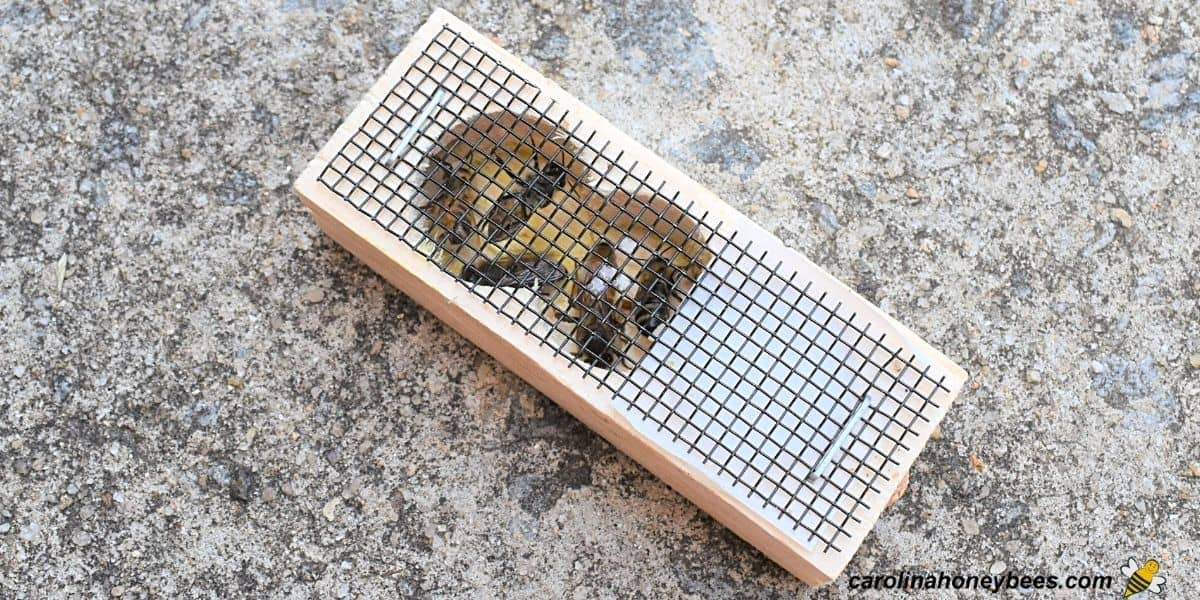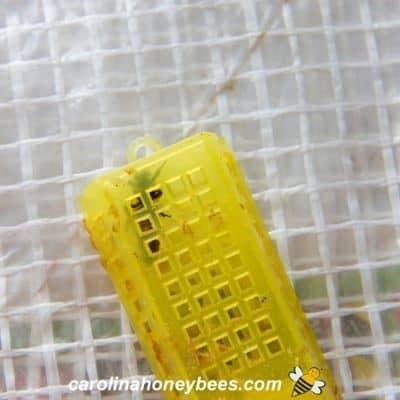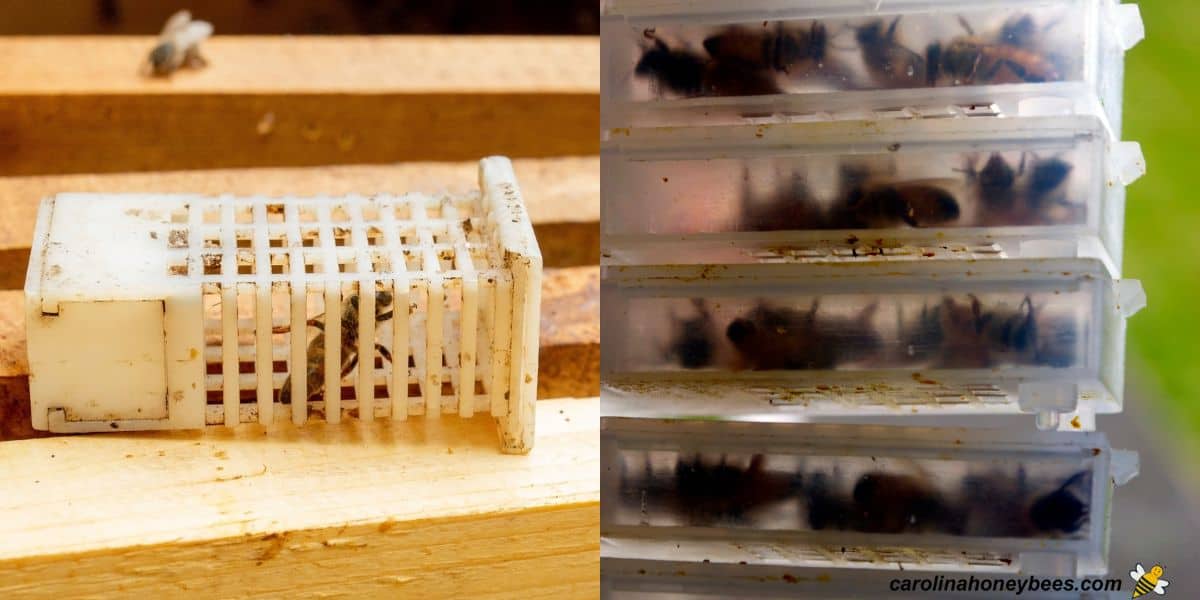How to Care for a Queen Bee in a Cage
Any beekeeper will experience a time when it is necessary to care for a caged queen honey bee. This special cage aids in the process of introducing her to the colony. Occasionally, it may be necessary to wait a few days before installing her into your hive. In this guide on caring for a queen bee in a cage, you’ll learn how long a queen can safely stay caged and how to care for her while she’s waiting.

Often, you make be requeen your beehive, because they have lost there queen. But, beekeepers routinely give new queens to colonies to increase production and health.
Why Queen Bees Are Caged
The reason queen honey bees are kept in a cage is to keep her safe. In this separate container, she can be seen and smelled by the worker bees, but is somewhat protected.
Your new queen is going into a colony that does not recognize her as THEIR queen. In most cases, just turning her loose in the hive will result in the bees killing the queen.
Any colony recognizes their queen through certain bee pheromones (each queen smells different). They need time to adjust and accept her “scent”.
Queen Cage
Traditionally, the cage is a tiny box of wood and wire – similar in size to a small box of matches. But, plastic queen cages are becoming more common.
Worker bees in the new colony can see and most importantly smell her . They will even insert their proboscis into the cage to feed the attendants accompanying her.
A white candy plug in one end is slowly eaten away over the next 3-7 days. Acceptance by the colony is likely to occur by the time the candy plug is gone.
If a queen arrives with most of the candy plug already gone – you can make queen candy with powdered sugar and corn syrup.

How Long Can a Queen Bee Stay in a Cage?
A healthy queen can survive in her cage for several days – perhaps even a week or so with no ill effects. Still, this is not a natural environment for a honey bee.
The sooner you get her into a colony – the better things may turn out. The bees can always take better care of her needs than we can. It also begins the acceptance phase as her pheromones are being released inside the hive.
Banking Queens
Larger scale beekeepers participate in a practice called banking queens. Many caged queens are kept inside a queenless hive until needed.
The members of the colony feeds and cares for each queen until she is needed. Her cage and attendants offer some protection. You can do this – but for most beekeepers it is not necessary.
Where to Keep the Her Until Installation
Installing the queen as soon as she arrives is always preferable. But, that may not be possible. You want to place the cage in a safe place until you are ready to proceed.
Place the queen cage in a warm, dark, draft free place. In the past, I placed my caged queens under a tented greeting card up on the bookshelf.
Then, my cat became too interested in the attractive buzzing sound – I had to find a new place. The perfect spot is away from loud noises, human activity or pets.
Feeding the Caged Queen
It really is not necessary to attempt to feed a caged queen honey bee. Hopefully, she will be in the hive in a day or two. In the meantime, she and her attendants will feed on the candy plug.
However, twice a day, I put 1 drop of water on the screen (or slotted if plastic) side of the cage. Only 1 tiny drop, we are not watering a cow here. Too much water will make a mess and may chill your bees.

Reusing Queen Cages
There are several reasons you may be dealing with a queen in a special cage. It may not be the most hygienic thing to do but I save queen cages (especially plastic ones) for reuse.
When you catch a bee swarm, you might find and cage the queen to help anchor the swarm in the new hive. It is not usually necessary – but you could.
(However, do keep in mind that even prime swarms and after swarms can have more than one queen in them – so no guarantees.)
Signs Your Caged Queen Bee is Healthy
A healthy queen will be alert and active. She moves around inside the small space (as much as she can).
The 2-3 attendants are workers from the colony she came out of. They feed and groom her.
What if the attendants are dead! Yes, that does happen and it is no cause for alarm. Bees die every day and there is no way of knowing how old those attendants are.
Having a one or two dead bees in the cage does not mean your queen is damaged. If she is active and moving around, she is likely just fine.

Removing the Dead Workers
What should you do with dead bees in the queen cage? First, ensure that it is an attendant that is dead and not the queen.
Then, if only 1 bee is dead you may choose to just leave things be. I know that is morbid from a human point of view but the bees seem to pay it little attention.
Personally, if I have a dead attendant it sets off all my OCD tendencies and I try to get her out. I hold the cage with the cork only end down (hoping the queen and others crawl up to the other end).
Removing that cork (and using my finger to plug it when needed), I use tweezers or a toothpick to try to get the dead bee out. But, this is not something you have to do and be careful or you may hurt your queen.
If all the attendants are dead (more than 2), I try to remove the dead bees if possible before introducing her to the hive.
Final Tips
I love getting new queen bees for my hives (though I don’t love paying for them). Even more reason to take care of a queen bee in a cage carefully. Strive to keep her comfortable until she is able to join her new family.

